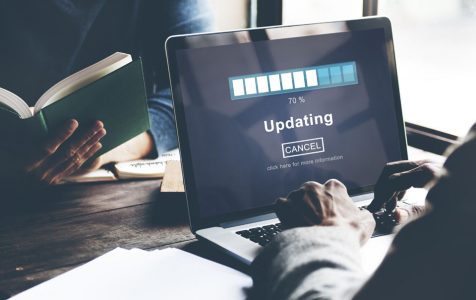Regularly, Microsoft releases security updates aimed at enhancing user experience and resolving issues. Nonetheless, it is a reality that certain updates can fail or disrupt networks and individual users. In many cases, the only known solution is to uninstall the problematic patch.
A case in point is Microsoft updates KB4481480 and KB4480970 causing issues with remote desktop and remote access. You might find that your Windows 7-powered machine (a shared computer on a network), after upgrading to the said updates, is suddenly unable to access network shares or the remote desktop. The remote connection persists even after a well-meaning reboot and resetting passwords.
Learn from this article how to fix failed update KB4480970 and KB4481480 using a number of methods.
What Is KB4480970 and KB4481480?
Microsoft rolled out these updates earlier this month for computers running Windows 7, aiming to address security vulnerabilities and provide major fixes and performance improvements. KB4480970 (Monthly Quality Rollup for Windows 7 SP1 and Windows Server 2008 R2 SP1) was specifically released to address different issues:
Expert Tip: For smoother PC performance, consider using a PC optimization tool. It handles junk files, incorrect settings, and harmful apps. Make sure it's right for your system, and always check the EULA and Privacy Policy.
Special offer. About Outbyte, uninstall instructions, EULA, Privacy Policy.
- Offer protection against a vulnerability known as Speculative Store Bypass (CVE-2018-3639) for AMD-based computers
- Tackle an issue affecting PowerShell remoting loop back using non-administrator accounts
- Provide security updates to the following: Windows Kernel, Windows Storage and Filesystems, Windows Wireless Networking, and the Microsoft JET Database Engine.
Windows 7 SP1 and Windows Server 2008 R2 SP1 should be immediately patched due to the cited vulnerabilities, especially in the case of PowerShell.
These updates install fine for most users via Windows 7’s automatic updates system. For some, however, something could go wrong or the updates can yield problems, such as in establishing connection with other computers in a network.
How to Fix Failed Update KB4480970 and KB4481480
Several administrators have revealed online that despite successfully installing the updates (particularly KB4480970), they couldn’t access network shares anymore. The installation translated to communication problems with SQL servers for some, and even the fileshare couldn’t be reached partially. For others, installing the update hindered them from using RDP to access RemotePC from their clients. Only uninstallation fixed those problems.
Whether it’s a botched update process or post-update issues that you’re facing, here are some fixes to try:
Download Stand-alone Installers
It’s worth noting that Microsoft offers stand-alone installers for all its Windows updates, and you can download these stand-alone packages for KB4480970 and KB4481480 updates in order to install them on your computer as you normally would other programs. Do this by visiting the Microsoft Update Catalog website.
Make Tweaks on Remote Settings
Make this change to get the Remote Desktop Connection (RDC) to work:
- Go to Control Panel\All Control Panel Items\System by opening Control Panel and clicking System.
- Click Remote Settings, which should open System Properties at the Remote tab. You should find that the current selection is Allow connections only from computers running Remote Desktop with Network Authentication (more secure).
- Select Allow connections from computers running any version of Remote Desktop (less secure) on all your computers.
- Reboot all the computers and RDC should work fine by now.
Edit the Registry
Based on expert probes that have been done so far, the issue is triggered only if the user attempting to create the connection is an admin on the machine hosting the share. If he’s a mere user on the device hosting the share, the connection should get through just fine.
This registry hack seems to be a quick fix, modifying the Windows Registry and intended to be run on the system hosting the share. Keep in mind, though, that it lowers security, so think of it as exactly just that – a quick workaround – and strive for a more permanent solution to the problem.
The LocalAccountTokenFilterPolicy setting affects how admin credentials are applied in order to remotely administer a computer. Here are steps to change the settings for its registry entry, as described in this Microsoft article:
- Start your computer in Audit mode by pressing Ctrl+Shift+F3 at the Windows Welcome screen.
- Manually edit the registry. Click Start, and then type regedit in the Start Search Click regedit.exein the Programs list.
- Find and click the following registry subkey: HKEY_LOCAL_MACHINE\SOFTWARE\Microsoft\Windows\CurrentVersion\policies\system
- On the Editmenu, click New > DWORD Value.
- Type LocalAccountTokenFilterPolicyfor the name of the DWORD. Afterwards, hit Enter.
- Right-click LocalAccountTokenFilterPolicy. Next, click Modify.
- In the Value databox, type 1 and click OK.
- Exit Registry Editor.
Again, remember that serious problems can ensure if you modify the registry incorrectly via Registry Editor or another method, so do it at your own risk and with utmost caution.
Final Notes
Failed updates as well as post-installation problems have been reported with Microsoft updates KB4481480 and KB4480970. The general sentiment revolves around issues accessing or viewing a Windows 7 computer on a network (from Administrator accounts) after pursuing the updates.
Try one of the fixes we provided above and see the problem finally gets solved. Don’t forget to keep your Windows computer in tiptop shape using a trustworthy third-party PC repair and optimizer tool.
Have you ever come across this particular issue? Let us know in the comments!
